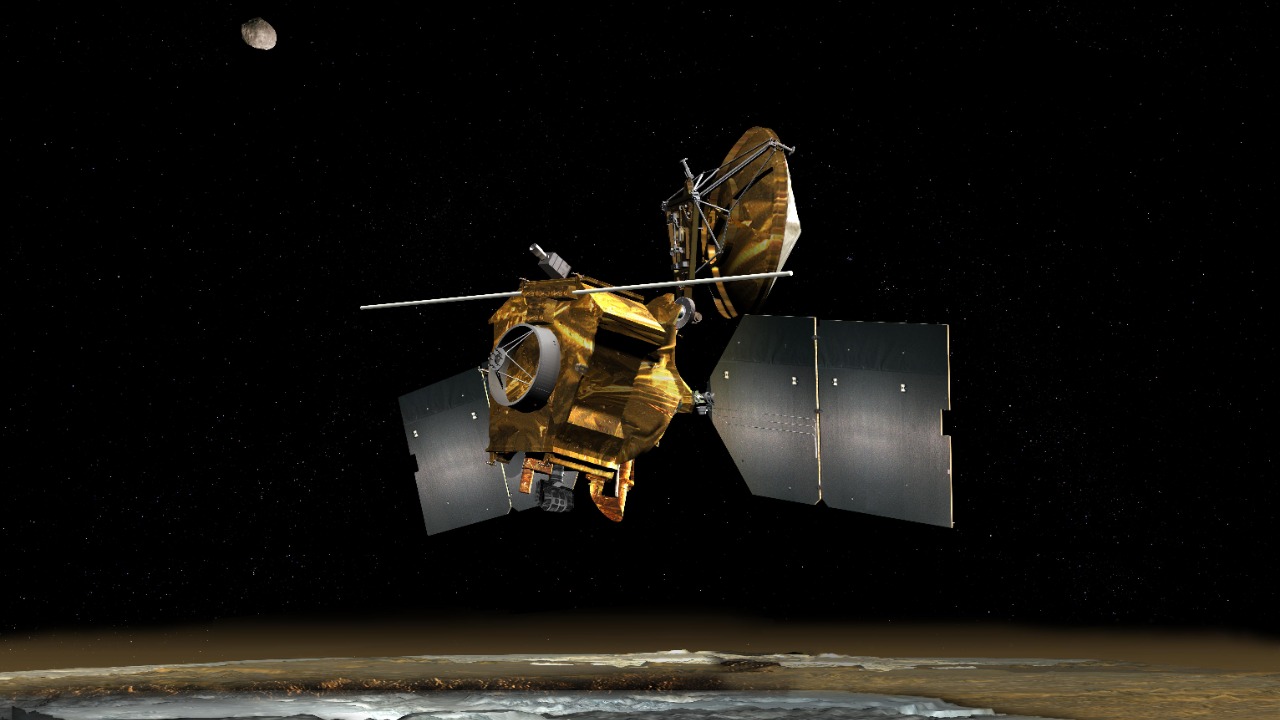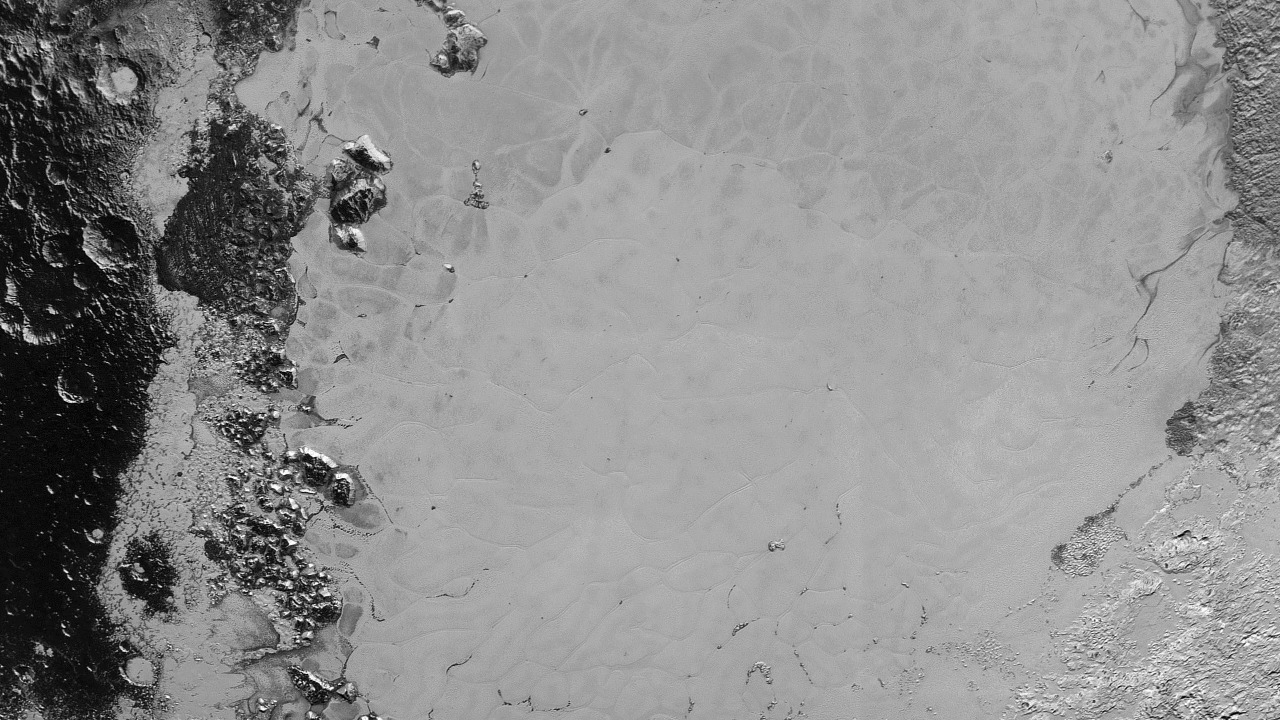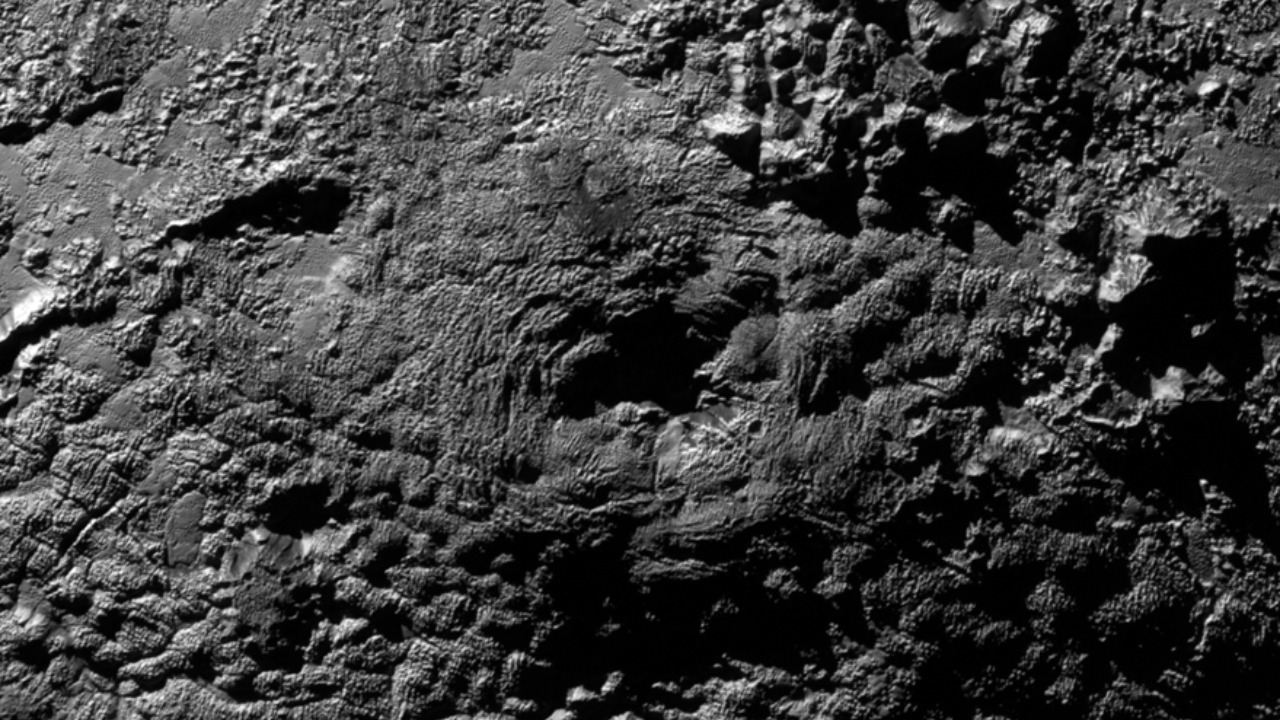
Recent studies suggest that ancient volcanic eruptions on Mars might have transported significant amounts of hidden ice from the planet’s polar regions to its equator. This process could explain the ice deposits detected by NASA’s orbiters in the Medusae Fossae Formation, a vast equatorial mound spanning over 1,000 kilometers. The mechanism involves explosive eruptions that lofted ice particles into the atmosphere for global redistribution, dating back to the Hesperian period around 3.5 billion years ago. This discovery reshapes our understanding of Mars’ volatile history and its past habitability.
Mars’s Volcanic History and Ice Transport

The Tharsis volcanic region, home to some of the largest volcanoes in the solar system, including Olympus Mons, played a crucial role in Mars’s geological history. These volcanoes were capable of generating explosive eruptions that ejected water ice from subsurface reservoirs into the thin Martian atmosphere. This process allowed ice particles to settle equatorially over millions of years. According to Phys.org, radar imaging from the Mars Express orbiter has revealed subsurface ice layers up to 3.7 kilometers thick in the Medusae Fossae Formation, supporting the theory of volcanic delivery rather than local formation.
Atmospheric modeling shows that ice particles, once lofted to altitudes above 50 kilometers, could remain suspended for years before raining out at low latitudes. Mars’ weak gravity and dusty conditions facilitate this prolonged suspension, allowing for the gradual accumulation of ice at the equator. This process not only provides insights into Mars’s past climate but also suggests a dynamic water cycle that could have supported transient liquid water in the planet’s history.
Evidence from Orbital and Surface Data

Data from the SHARAD radar on NASA’s Mars Reconnaissance Orbiter has been instrumental in mapping pure water ice signatures in equatorial sediments. This data distinguishes these deposits from volcanic ash, providing strong evidence for the presence of water ice. The radar penetrated up to 5 kilometers deep, revealing the extensive nature of these ice deposits. Such findings underscore the potential for volcanic activity to have redistributed water ice across Mars, altering its surface and climate over geological timescales.
HiRISE images of the Medusae Fossae Formation show layered deposits with erosion patterns indicative of past ice-rich flows. These patterns suggest that volcanic heat may have influenced the movement and deposition of ice, with volumes estimated at 1.4 million cubic kilometers of water equivalent. This substantial volume highlights the significant impact of volcanic processes on Mars’s hydrology and supports the hypothesis of a once-active water cycle that could have sustained life.
Implications for Mars’s Water Cycle

The delivery of ice to Mars’s equator could have sustained temporary lakes or groundwater during the Hesperian epoch. This is particularly relevant to the observed outflow channels, such as those in Valles Marineris, which may have been carved by flowing water. Understanding this process is crucial for reconstructing Mars’s climatic history and assessing its potential for past habitability. The presence of water ice at the equator also has implications for current climate models, influencing seasonal CO2 ice caps and dust storms that redistribute residual water vapor.
The potential for preserved volatiles to influence current climate models is significant. Seasonal CO2 ice caps and dust storms could redistribute residual water vapor, affecting the planet’s climate dynamics. Moreover, the possibility that volcanic heat and delivered water created subsurface oases suitable for microbial life around 3 billion years ago adds an intriguing dimension to the search for past life on Mars. These findings suggest that Mars’s climate was once more dynamic and potentially habitable than previously thought.
Comparative Icy Volcanism on Other Worlds

Comparing Mars’s volcanic processes to cryovolcanism on other celestial bodies provides valuable insights into planetary geology. For instance, data from the New Horizons mission in 2015 revealed possible ongoing ice volcanoes on Pluto, such as Wright Mons, which may erupt ammonia-water slurries. This suggests similar volatile transport mechanisms in cold environments, highlighting the diversity of volcanic activity across the solar system. According to Live Science, Pluto’s Sputnik Planitia shows nitrogen ice flows akin to Mars’s potential water ice redistribution, driven by tidal heating rather than basaltic volcanism.
These parallels underscore the importance of understanding icy volcanism in shaping planetary surfaces and atmospheres. The study of such processes on Mars and Pluto can inform models of planetary evolution and the potential for habitability in diverse environments. By examining these mechanisms, scientists can better predict the conditions necessary for sustaining life and the likelihood of similar processes occurring on other planets and moons.